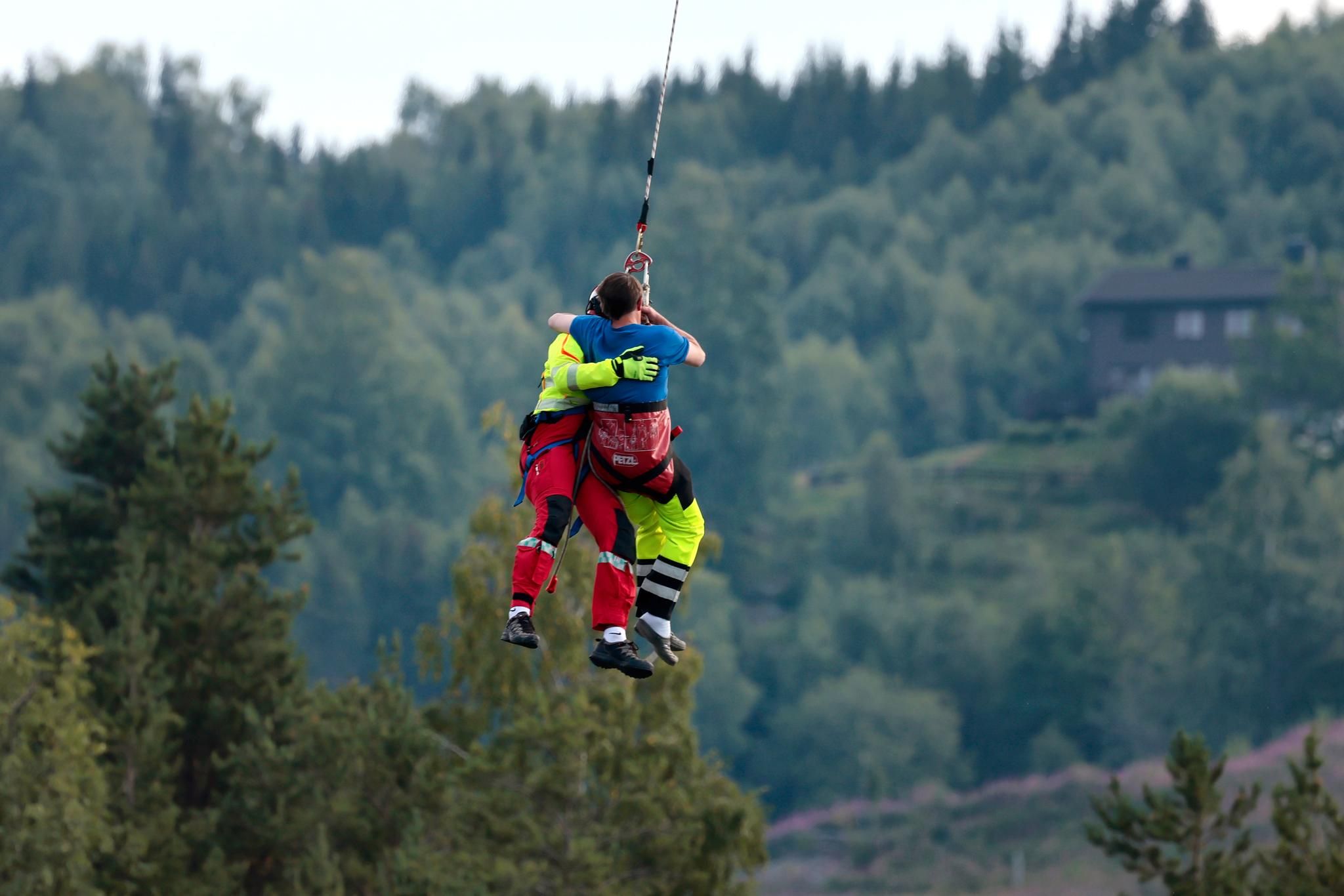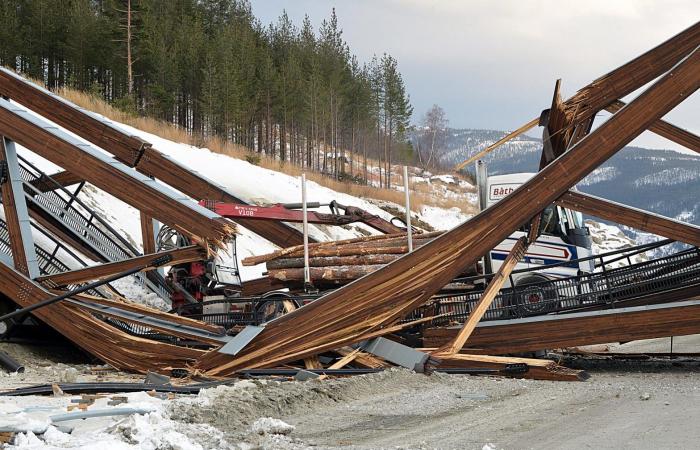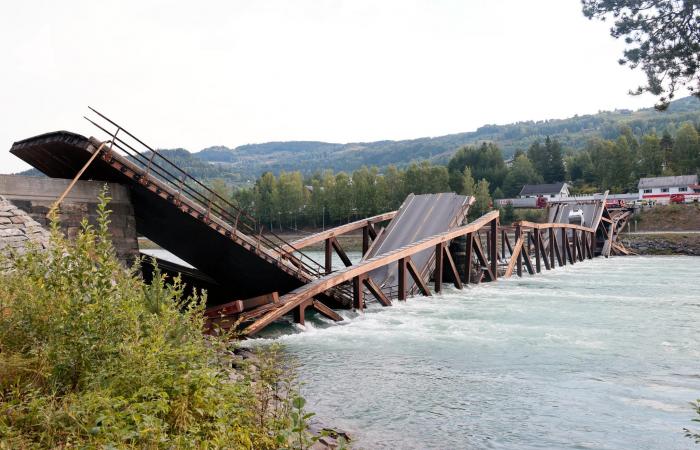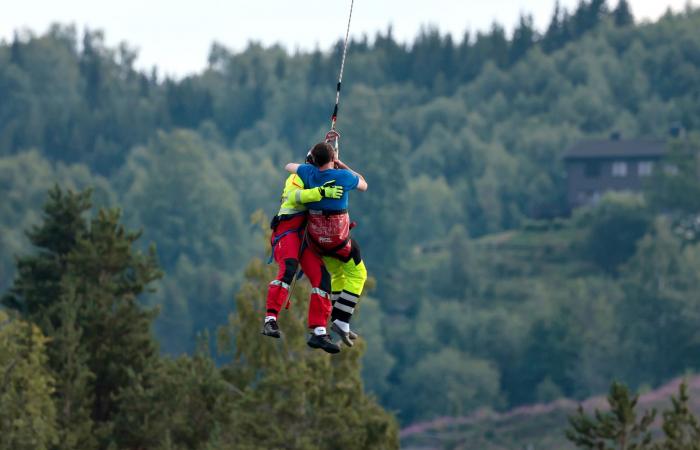Thirteen bridges were declared healthy by the Norwegian Road Administration in 2016, although minor deviations were found. It happened after another wooden bridge collapsed earlier that year. The Norwegian Public Roads Administration has now appointed a crisis staff.
Aug 15 2022 10:03
Last updated 18 minutes ago
On Monday morning, Tretten bridge collapsed over Gudbrandsdalslågen. The E6 was also blocked by the collapsed bridge. There was a car and a truck on the bridge when it collapsed, but so far no injuries have been reported.
The Norwegian Public Roads Administration informs Aftenposten that they have set up a crisis team after the incident.
It is not the first time a wooden bridge of this type has collapsed. It also happened on 17 February 2016, when the Perkolo bridge in Gudbrandsdalen fell over the E6 when a heavy truck drove over.
Was examined in 2016
In February 2016, faults were also found on the Sundbyveien bridge in Akershus.
The road authorities set up a specialist group to check other wooden bridges of the same type. The bridge type is called a truss bridge.
One of the bridges that was scrutinized was Tretten bru.
Half a year later, in September 2016, they submitted a report. The expert group found no serious design errors on the 12 truss bridges that they examined, wrote Gudbrandsdølen Dagningen (GD).
Certain “minor deviations” were found, which led to certain points on some bridges being reinforced.
Built according to old regulations
In 2010, new regulations were introduced for the design of bridges. Thirteen bridges, which were completed in 2012, had been designed according to the old regulations, GD wrote in 2016.
The Norwegian Public Roads Administration said in 2016 that they would “take simple measures so that they also satisfy the new regulations”.
“It is recommended to consider strengthening certain junctions” on Tretten bridge, the report states, among other things.
The Swedish Road Administration believed that there were no construction defects on the Tretten bridge. But they came to the conclusion that, according to the current regulations, “the security against some brittle fracture mechanisms was too low”.
It also emerged that dowels had been discovered to be too short somewhere in the construction. Dowels are a structural part used to transfer loads between different materials.
According to the report, these had been ordered to be replaced, but it was emphasized that they had no small impact on capacity.
At the same time, they stated that it was not unusual for older constructions not to satisfy newer regulations.
Pointed out deviations
In 2017, VG inspected numerous Norwegian bridges. The newspaper checked the status of the bridges, inspections and pointed out a wide range of weaknesses.
About the bridge at Tretten, it is said in 2017 that “No serious damage that threatens the berry crack or traffic safety has been recorded”.
However, several deviations were also pointed out. No last individual inspection was registered, as it should have been.
The main rule is that this should happen every year.
At the same time, a number of measures related to maintenance were also registered as deviations, including those related to improving drainage.
Innlandet county council, which owns the bridge, tells VG that it was inspected in 2021.
– There are no reports of any defects on the bridge, says department director Aud Riseng to the newspaper.
At 10 a.m. on Monday, Aftenposten has still not succeeded in getting comments from the Norwegian Public Roads Administration or Innlandet county council.
Norconsult confirms that they were involved in the design of the Tretten bridge.
– Shortly after the accident became known, we set up an emergency organization that will look into the incident together with the Norwegian Public Roads Administration, says Hege Njå Bjørkmann, communications director at Norconsult.

– No weaknesses with wood as a building material
The Swedish Road Administration concluded in its report that no weaknesses were found with wood as a construction material in bridges.
The control group “found no weaknesses in wood as a material used in Bruer”. They found no damage that showed overloading or anything else that reduces the load-bearing capacity of the bridges.
The report was received with relief from the timber industry.
– The report welcomes both glulam as a construction material and bridges made from glulam. No weaknesses have been found with wood as a construction material in bridges. The inspections that have been carried out so far have not revealed any damage that reduces the load-bearing capacity of the bridges. No signs of overload have been found either. This means that glulam bridges are safe, said director Rune Abrahamsen of Moelven Limtre AS to Byggmesteren in 2016.








